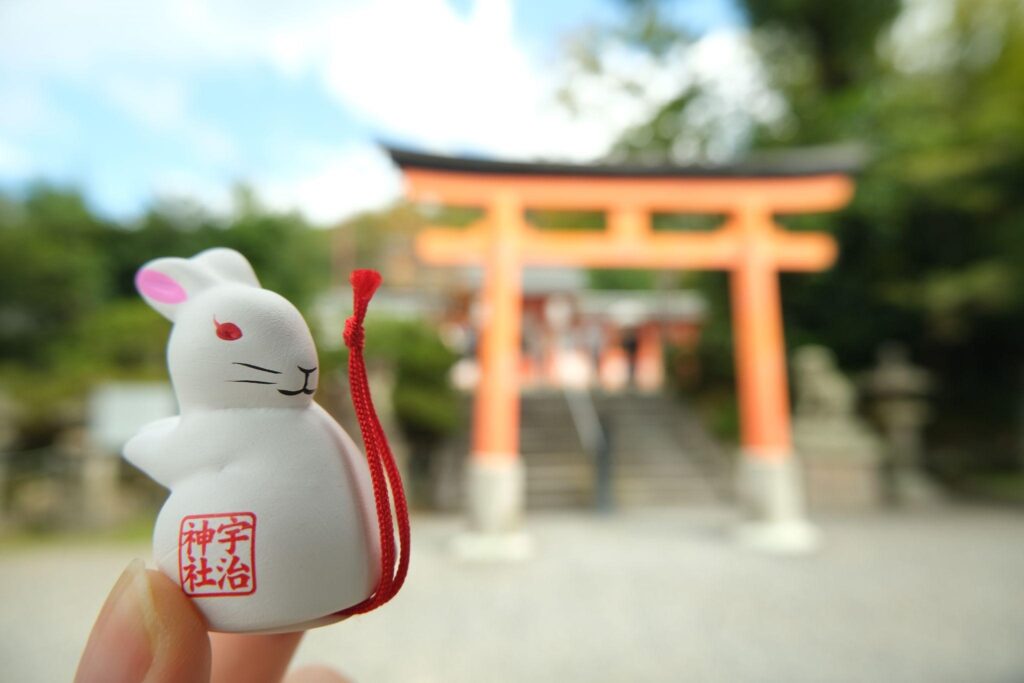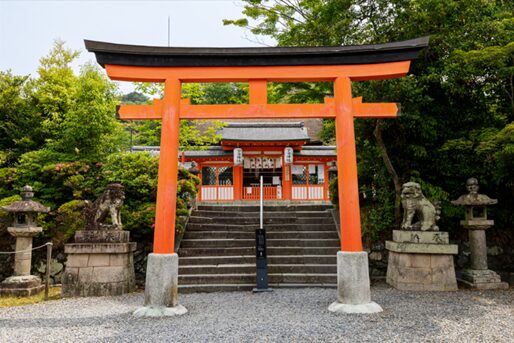Understanding Omamori and Omikuji
Kyoto, with its deep spiritual roots, is the perfect place to find omamori (charms) and omikuji (fortunes). While both offer a connection to the divine, they serve distinct purposes and come with their own traditions.
What is the purpose of Omamori?
Omamori (御守/お守り), literally meaning “protection,” are Japanese amulets sold at Shinto shrines and Buddhist temples. Their primary purpose is to provide various forms of luck, blessings, and protection from evil or misfortune.
Omamori can be general, offering overall good fortune, or highly specific, catering to particular aspects of life. Common purposes include but are not limited to:
- Kōtsū-anzen (交通安全): Traffic safety
- Yaku-yoke (厄除け): Warding off evil or bad luck
- Kaiun (開運): General good fortune or better luck
- Gakugyō-jōju (学業成就): Academic success and passing exams
- Shōbai-hanjō (商売繁盛): Prosperity in business and financial matters
- En-musubi (縁結び): Love, matchmaking, and strengthening relationships
- Anzan (安産): Safe pregnancy and childbirth
People often carry omamori on their person, attach them to bags, cell phones, or hang them in cars or homes, keeping the blessings close. They also make thoughtful gifts, symbolizing well-wishing for friends and family.
What is inside an Omamori?
An omamori typically contains a small piece of paper or wood with a prayer, religious inscription, or invocation, which has been consecrated by a priest.
What is the difference between Omikuji and Omamori?
While both are spiritual items found at Japanese temples and shrines, omikuji and omamori differ significantly in their function and form:
Omikuji (おみくじ – Fortunes):
・Purpose: To gain insight into your immediate future or current circumstances. They are random fortunes drawn by visitors, offering guidance on various aspects of life such as love, health, business, travel, and studies.
・Form: Typically a small strip of paper with a fortune written on it. Some come encased in charming figures, like the rabbit or dove omikuji mentioned in this article, which can be kept as souvenirs.
・Action after reading: If you receive a good fortune (like dai-kichi – great blessing), you generally keep it with you for the luck to stay. If you receive a bad fortune (like kyō – misfortune), it’s customary to tie it to a pine tree or a designated wire rack at the shrine/temple. This is believed to “tie up” the bad luck, preventing it from following you.
Omamori (御守/お守り – Charms/Amulets):
・Purpose: To provide ongoing protection and blessings for a specific period (often a year) or until a particular goal is achieved. They are proactive tools for attracting good fortune and warding off negativity.
・Form: Usually a small, sealed brocade pouch containing a consecrated prayer or inscription. They often come with a string for attachment. As seen in this article, their designs can be incredibly varied and artistic.
・Action after purchase: Kept close to the person or in a relevant location to receive its continuous protective benefits. They are not opened.
In essence, an omikuji tells you your fortune, while an omamori actively helps to shape or protect your fortune. Now let’s discover where you can find some cute and unique ones for your journey.


